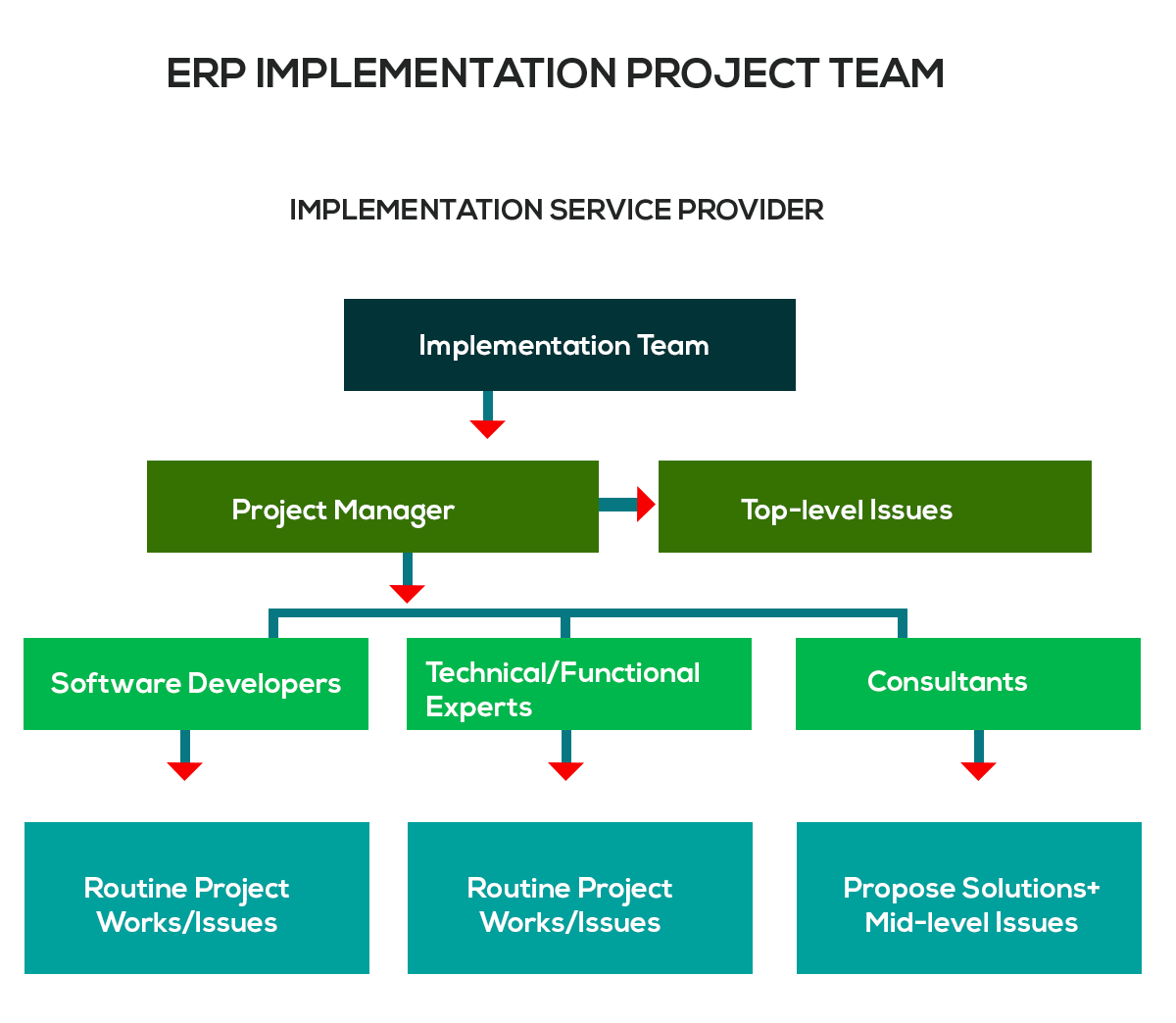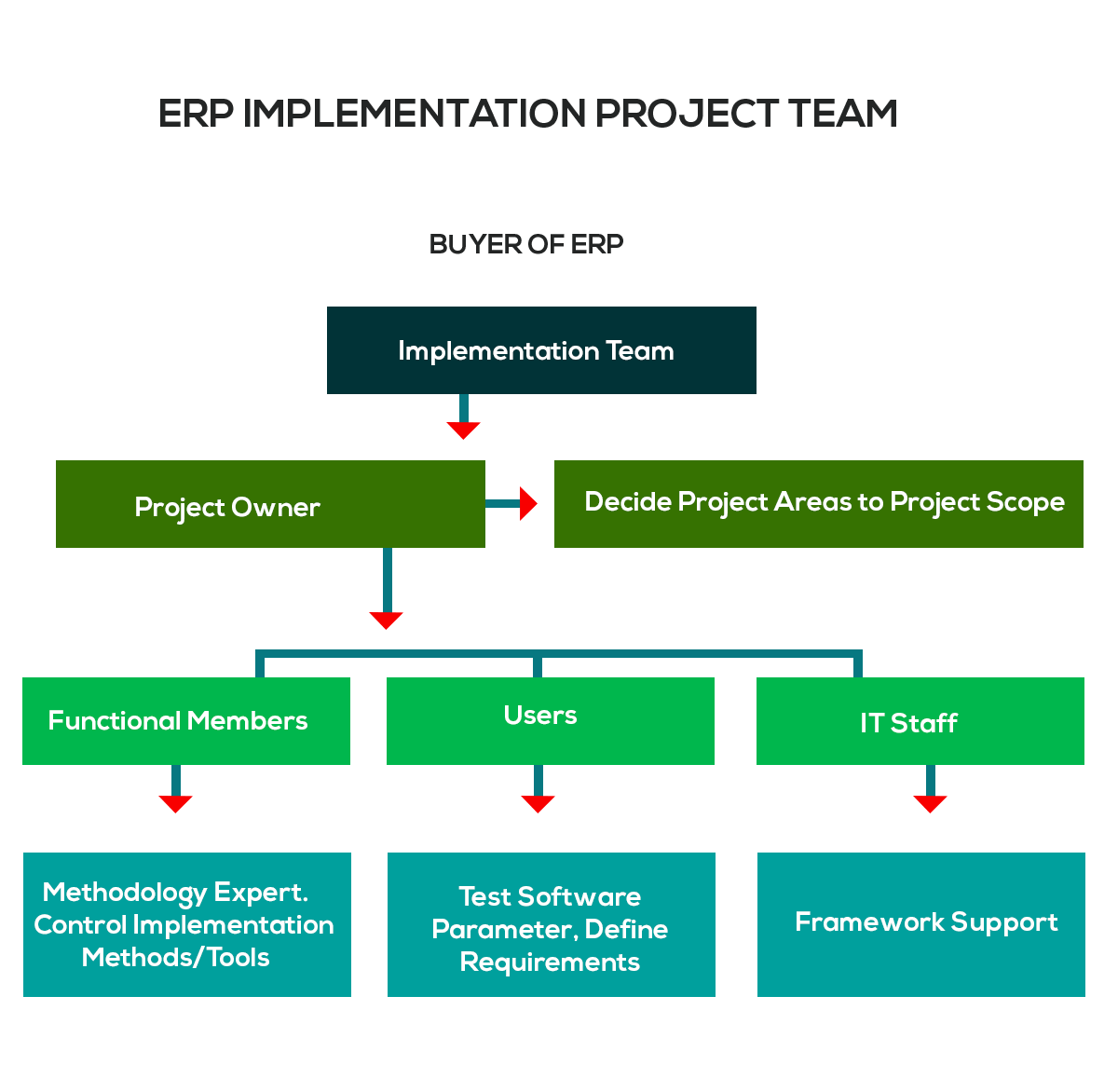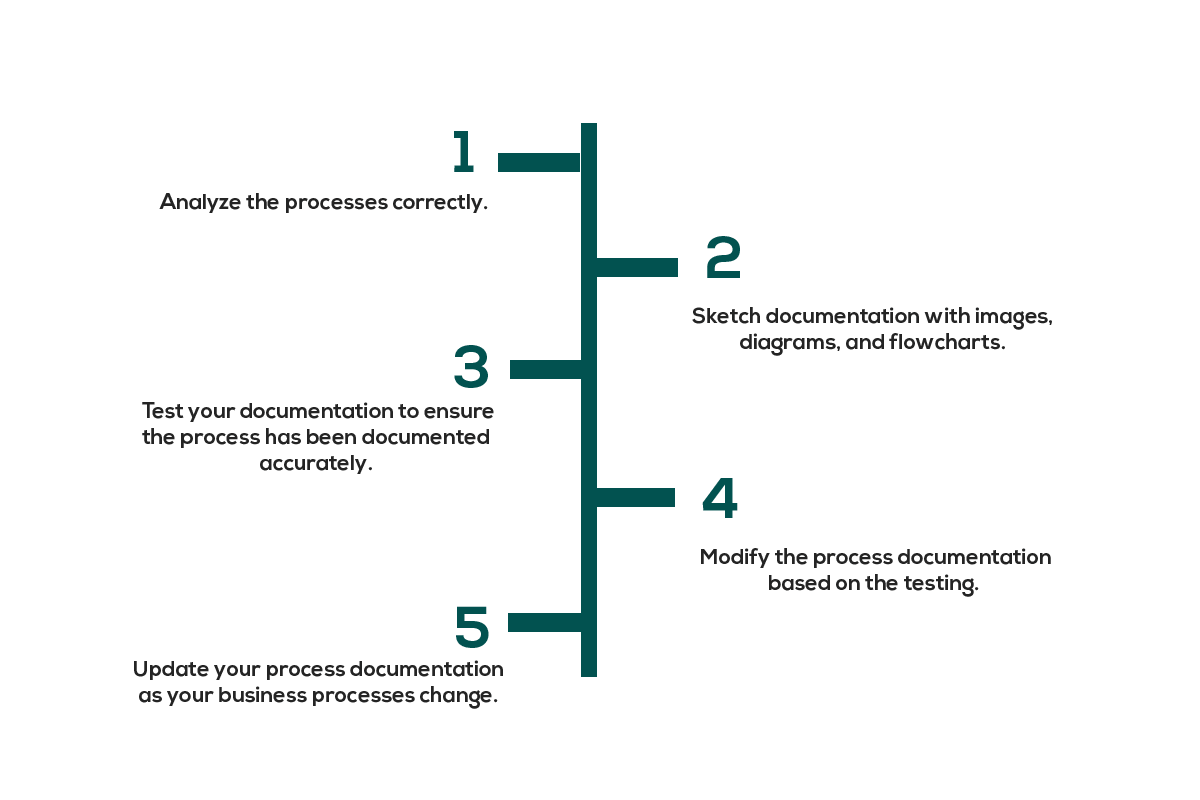“The way a team plays as a whole determines its success.” Babe Ruth, This phrase has high significance when it comes to the implementation of ERP applications in business.
For any business, ERP implementation is the most challenging and complex task to undertake. The success of the business lies in how the organization effectively organizes the implementation project and how they make use of the ERP for better ROI and productivity.
How to ensure a successful ERP implementation?
Here are the essentials or the checklists the business should assure before stepping into ERP implementation.
1. Project Team
An ERP project demands a good set of resources from the organization. Putting together your resources helps in identifying the current issues in the software, current gaps in the workflow and others. A proper ERP requirement definition can be laid only by a team that got a clear understanding of their needs in the application.
A team with clear goals makes sure that your ERP is a success. Therefore, it is advisable that you make a team within your business, that helps you in identifying the right needs in the ERP application.
Who makes the team for ERP implementation?
Customer Project Team + Vendor Project Team = ERP Implementation Team
Implementation team roles and responsibilities keep differing from one project to another. Sometimes you may require less, sometimes more and different resources to undertake the project. However, understanding the roles and responsibilities of these team members help you to plan your implementation with much ease. Having a team that is responsive to changing business requirements, possesses great communication and problem-solving skills helps with the easy carrying of your ERP implementation task.
The following are the team members that we insist on laying successful ERP implementation.
Customer Project Team
Among the customer project team, the most crucial and mandatory member of the team should be the user. Why, because, it is the user who knows the strength and weaknesses of the application. After all, he is the one who is spending and will be spending a plentiful time on it. Secondly, your team must include someone from senior management. This can include a project manager/owner or team leader. Pulling together all these individuals and making them fully engaged in the process paves the way to the success of your ERP implementation project. The user can be from the main business areas like finance, purchasing, quality, sales, etc.
Let’s look at their responsibilities in person:
Project Owner: The project manager or a project owner takes all the high-level responsibilities in implementing a new ERP. No matter, whether he is directly involved in the ERP implementation process, the ultimate direction in which the ERP implementation goes is decided by the project owner. It is the responsibility of the Project Manager to organize the implementation process, develop the specific requirements and goals for the solution, as well as plan the project budget. He should also remain the point of contact for resolving employee issues, directing and motivating the project team, managing schedules, timelines, etc for the project. However, with growing company size, the above said responsibilities get split among the committee of executives. The functional team members come under the project manager.
Functional Team Members: Much like the project owner or the team leader, the functional team members are also having a significant role in coining the implementation project. Sometimes, they are also called Subject Matter Experts as they provide necessary inputs on business rules and standard operating procedures that should be implemented in the new application, either via configuration or customization. Coming from different areas of the business they help in designing and configuring software parameters for each ERP module.
One of the significant portfolios of the functional team members is developing process flowcharts for the existing and new system processes. They develop methods to resolve process gaps in the new software application. They also effectively contribute to identifying process improvement opportunities within newly implemented ERP.
User: The end-user is considered to be the most versatile player in the ERP implementation squad. Their presence determines the longevity of your solution. Being well-lit on the ins and outs of every business department, their interplay in the discussion about new ERP matters. Throughout the implementation phase, their presence should be assured in order to determine the usability and adaptiveness of the application. In larger companies, there will be more than one user in the team analyzing the usefulness and extensiveness of the application. However, with smaller enterprises, it will be mostly the Project Owner or the Team Member who will be testing the application.
IT Resources: These resources are needed for taking care of the technical responsibilities surrounding the ERP implementation project. It comes to the responsibility of the technical resource to carry out periodic upgrades. Their presence is inevitable in both the pre-implementation phase and the post-implementation phase.
A good implementation team makes from a combination of individuals possessing technical skills, leadership attributes, and a positive approach.
Vendor Project Team
Much similar to the customer project team, the vendor team also includes a team implementation service manager or a project manager. His prime responsibility is to understand and interpret the customer’s requirements, parallelly accommodate those requirements by recommending a viable approach. Under the implementation service manager, there will be technical and functional consultants who will analyze, design and finally implementation the ERP application. They look after the development of procedures also the integration of business rules into the system.
Other responsibilities include:
1. Preparing Functional Requirement Documentation.
2. Preparing the necessary training materials.
3. Communicating with the Customer Project Team.
4. Developing statements of work.
5. Scheduling work plans and completing tasks on time.
6. Delivering Training to Customer Users.
7. Dealing with day to day issues.


2. ERP Documentation: Best Practices to Follow
With so many tales of successful ERP implementations, it is a feel-good vibe for many newbies such as entrepreneurs who look forward to ERP implementation. However, one should also pay ears to the ERP implementation failures so as to prevent themselves from getting into trouble.
According to the statistics brought by Panorama Consulting in 2015, it is 21% of companies that went through a bad experience in implementing their ERP, literally saying ERP implementation failure. However, the year 2017, witnessed with comparatively lesser failures in ERP implementations demonstrating 19%. But still, the failures are alarming numbers.
Odoo consultants have analyzed this issue and have come up with certain ERP implementation guidelines to curb the failures. Among the listed includes:
1. Assessment of business processes and defining business strategies.
2. Listing of short and long-term measurable goals.
3. Defying Risk Management Plan.
4. Proper listing of ERP requirements.
5. Choosing the right tools for successful ERP implementation.
6. Defining the training plans.
If you look above, you would understand that all these statements deal with ERP Documentation.
At each stage of an ERP implementation project, it is imperative to frame proper documentation so as to assure every essential is incorporated and everything is guaranteed for the effective functioning of the software. Proper documentation thus provides transparency and consistency over the ERP implementation goals and missions. It also denotes from the document that every employee in an organization shares the very same vision on ERP implementation.
What should be included in the ERP implementation document?
ERP documentation is an ongoing process, it never concludes until the project is successfully completed. It starts with a simple listing of the business goals, moving on to the project progresses and upgrades. It simply reflects every new change introduced into the system.
a) Documentation of Business Processes
Documenting your business process is the foremost thing to do before stepping into the ERP implementation project. Properly listing your current business process by marking out-of-date processes and the ones that need optimization helps in bridging the current gaps in business. Moreover, it is advisable that you start with documenting your current processes for not getting lost in the sea of new processes.
Here is the roadmap to properly document your business process

Set S.M.A.R.T Goals
Clearly define the vision and objectives of your organization. Set SMART goals to achieve the best result from your ERP implementation.
What constitutes SMART goals?
S - Specific
M - Measurable,
A - Attainable
R - Relevant
T - Timely
Simply saying, your ERP goal should be well-written, definite, realistic, result-oriented and time-bound.
Listing Requirement
A key issue today, for instance, is whether to have the application on-premise, in the cloud or a blend of the two. Therefore, make up a rundown of prerequisites and organize them in the correct manner dependent on the accessibility of your resource. Your ERP implementation document must be a concise report featuring key demands for an effective ERP implementation.
3. Setting Proper Timeline and Budget
Once you have made up your mind to go ahead with ERP implementation you are probably to get encountered with numerous expectations or desires. This includes everything from accepting the ERP application, using it effectively to solve business problems, needless to say imagining a prompt ROI. The rundown of your expectations is unending.
But do you know what is the first step taken in the ERP implementation project?
If you haven’t thought about it, let me tell you- it is setting up realistic timelines for your implementation project.
As per Panorama's 2016 ERP Report, most organizations battle with setting proper ERP implementation timelines. 57% of associations take longer than anticipated to actualize their ERP frameworks – generally on the grounds that they had unrealistic expectations. Adding further is the miscalculation of budgets, the spending plans, or resources troubling the ERP implementation process.
A larger part of associations takes longer than anticipated time to execute their ERP frameworks, bringing huge financial pains and emotional traumas, something no business wanted or would pleasure with.
All the risks put in is to see finally a successful ERP implementation, not its failure.
How to fix a proper timeline and budget?
Here are the tips to keep track of your ERP implementation project, not exceeding the budget and timeline.
1. Setting clearer goals upon understanding the real mission of implementation.
2. Collaborate with vendors, consultants, and peers to develop realistic timelines and budgets.
3. Tracking and ascertaining the implementation is no far from its original goals.
4. Staying organized and avoiding unnecessary customizations and features.
5. Seeking the help of good consultants in the business process modeling, scheduling, and budgeting.
While the utilization of good ERP consultants and industry best practices, one can assure successful ERP implementation strictly adhering to the proposed timeline and budget.
Real-time communication between the project teams helps in arriving at a realistic timeline and budget estimates. Daily work reports and other status meetings help the teams to identify any project derailments or delays. Additionally, discussions with the ERP seller will help in figuring out which objectives are a need and which are not, saving much of your time and budget.
4. Assuring networking facilities/ hardware infrastructures
The hardware requirements in an ERP implementation project always arise out of conditions like the number of users, the number of locations, the kinds of integration, and many others. These factors together contribute to the necessity of apt hardware infrastructures. Thus they should be well-addressed during the discussion carried with your ERP implementation partner because the ERP’s performance is undermined by the hardware. If the hardware isn’t properly sized, it can badly affect the ERP’s performance run.
There are multiple ways to set up an ERP system. However, the hardware needed for each kind differs. For instance, if you are installing your ERP as Cloud, you need a different kind of hardware requirement comparing to that of On-Premise.
Let’s look at one by one.
On-Premise
In this model, organizations run their ERP framework on servers which are in their own data centers located on the organization premises, or in a private Cloud – both under their very own immediate control. The ERP can either be bought or rented for a charge.
In the on-premise scenario, the obtaining and operation of servers and storage, software and hardware maintenance and generation of backups, lies in the shoulder of the organization. Therefore, the requirement for (and expenses of) hardware is higher in this situation.
Cloud
In this model, IT assets are not made accessible inside, yet online by an external service provider. For instance, organizations rent the ERP framework with the related licenses and pay usage fees for the utilization of specific function zones. IT resources like equipment/servers or applications are accessible over the web (rather than being worked in organization data centers). Equipment related expenses for the organization are comparatively lesser in the cloud.
Hybrid Cloud
This is a combination of the On-premise and Cloud setting of ERP. Regarding the equipment needs and cost, this hybrid cloud arrangement leaves you between the on-premise (the most significant requirement for owning/looking after equipment) and public cloud (least requirement for owning/looking after equipment) situations.
5. Define the data migration strategy
There are two techniques to migrate data to an ERP framework: transaction-driven and table-driven. The previous methodology only permits the extraction of active data from the legacy system. It further converts to a file and loaded to the new ERP. However, the table-driven technique permits relocation of the entire tables from the legacy system to the new ERP framework with no selection criteria.
It is difficult to tell which one is superior to the next since the necessity decides the appropriate methodology for your business. However, ensure that you have a good understanding with the partner to easily move information to the new ERP framework.
Selecting Migration Data
Not all existing data should be transferred to your new ERP, because shifting the entire database pushes up the ERP implementation cost. Therefore filter and remove irrelevant, wrong or duplicated data in your system. Every no-longer-used data can be defined as unnecessary and invaluable. Similarly, data irrelevant for report generation and the making of the important business decisions can be ruled out from migration. However, make sure you are operating all this in coordination with employees who directly work with the data.
Intelligent data selection gives you a well-categorized database promising maximum benefits from the ERP system.
Engaging with an experienced ERP service provider assures your data migration is safe and secure. One can also fix a timeline for effectively performing the data migration with a service provider.
At last, mandatorily verify the data in the ERP system. Mapping database fields among new and old determines the success of an ERP implementation. Users can check the compatibility via performing their daily business routines or running a random test on the newly coined ERP application.
6. User Training
Many business organizations are implementing ERP in their business place aware of their immense benefits and advantages in improving productivity and proficiency at work. However, this cannot be achieved until users are thoroughly taught the functionality of the application and make the best use of it. If the users aren’t trained on the proper use of the ERP system, in the long run, it can cost businesses millions of dollars. For instance, if the user wrongly enters the values in the system, it can lead to the generation of wrong and invaluable reports, eventually affecting the business run. Therefore, ERP training should be given the utmost priority. User-level ERP training ensures that the ERP system never ends up being unused. Proper training will boost the employee’s confidence and will aid them to do their work more efficiently and competently. With lesser resources, money, and time, the employees will be able to achieve higher quality work.
Remember, the successful ERP implementation lies in how the users adapt the application and use it at their jobs. Therefore, they must be properly trained to utilize the full functionality of the application.
Note: A disorganized and unstructured ERP implementation project wastes money, time and resources. The above mentioned ERP implementation best practices are just basic fundamental guidelines. Following them can save you to an extent from ERP implementation failures. However, there can be many unforeseen issues that will definitely pop up from time to time. But if you have properly designed ERP implementation documentation, such challenges won’t constitute a big problem at all.
If you are looking for Odoo implementation or any kind of Odoo support, write to us your requirement to odoo@cybrosys.com. We have more than a decade of experience in Odoo ERP and its allied services.